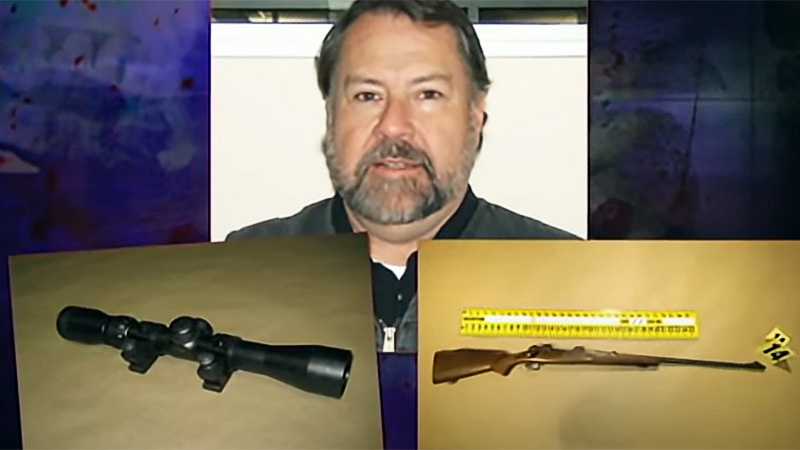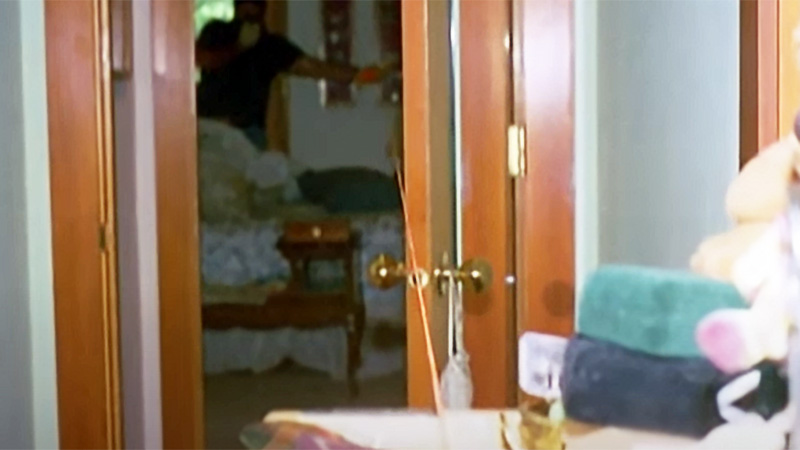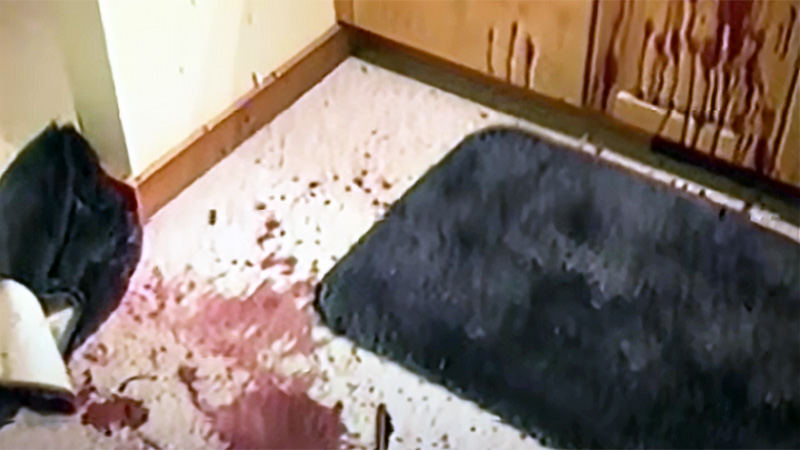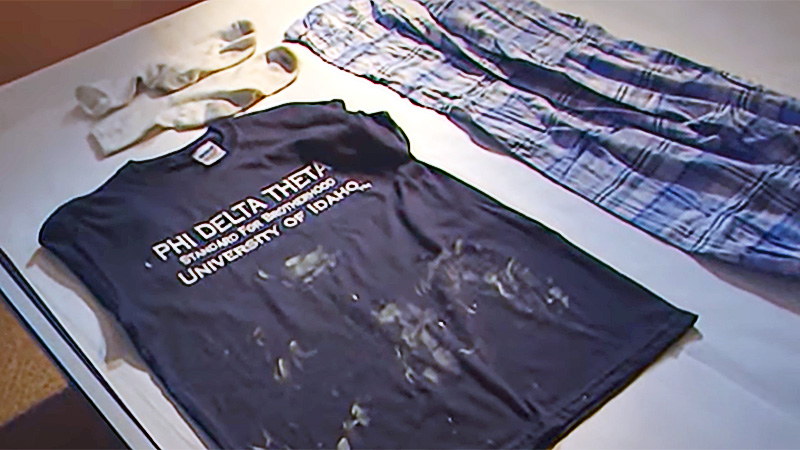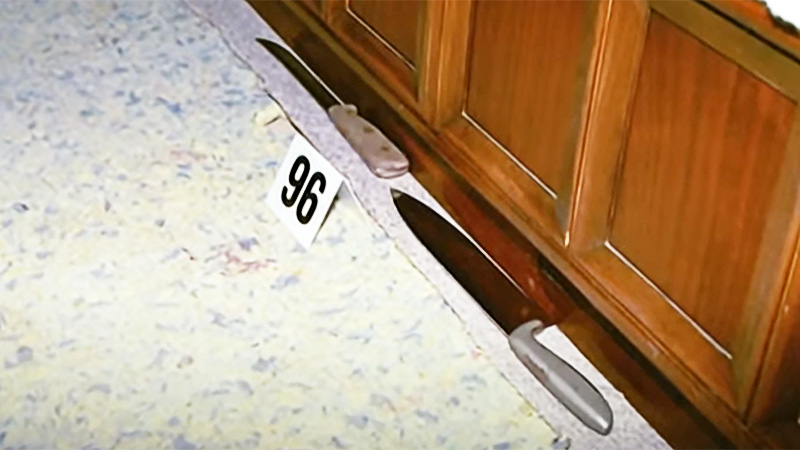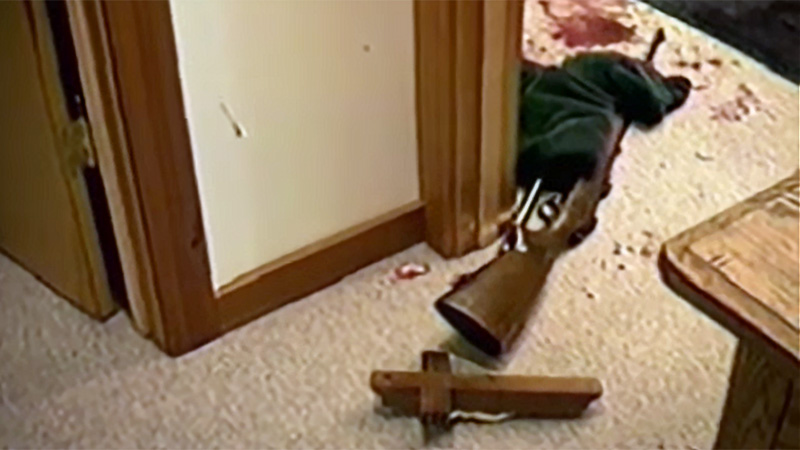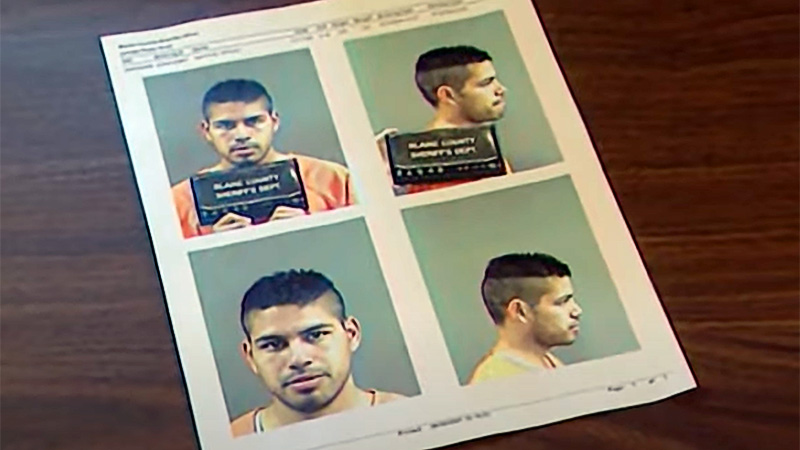Disrobed
16-year-old Sarah Johnson shot parents Diane and Alan
In order to have more freedom to spend time with her boyfriend Bruno Santos, 16-year-old Sarah Johnson stole a hunting rifle and murdered her parents.
Original air date: June 6, 2008
Posted: March 18, 2023
By: Robert S.
Season 12, Episode 23
In the early morning on September 2, 2003, police in Bellevue, Idaho received a call. A woman claimed her neighbors' daughter came over for help after an intruder shot both of her parents. In a town that hadn't seen a murder in over ten years, initially this was hard for police to imagine. But after arriving at the Johnsons' house, they confirmed 16-year-old Sarah Johnson's story had been true – both of her parents, Alan and Diane, were dead from gunshot wounds.
The killer left the murder weapon at the scene – a powerful, bolt-action hunting rifle. The location of the victims described how each had been attacked. Sarah's mother was still in bed; she'd been killed by a single shot. Her father had been in the shower when he heard the first shot. As he exited, the shooter's second shot tore through Alan's upper body, and he quickly succumbed to the massive injury.
Along with the hunting rifle, a number of conspicuous knives were found in unusual locations in the Johnson home that morning. Two had been thoughtfully placed on the floor at the foot of Sarah's parents' bed. A third knife was found in her brother's bedroom. Sarah's older brother Matthew was away at college. The police's investigation moved to the Johnsons' guest house where their friend and tenant, Mel Speegle resided. On the bed in the guest house, the scope to the hunting rifle used to kill Sarah's parents was located. However, Mel Speegle was nowhere to be found.
As police began to try to locate the Johnsons' tenant for questioning, they also continued to probe the scene for additional evidence. At that point, they noticed the trash collectors making their way toward their crime scene. Investigators asked the garbage collectors to cease their operations until their search could be completed. Preventing the Johnsons' trash from being taken away proved to be valuable – upon examining, a wealth of additional evidence was found in the garbage can.
Inside the trashcan, police found a pink bathrobe with blood spatter. Wrapped up inside the robe were a leather glove, a latex glove, and ammunition for a .25 caliber handgun. The victims had not been shot with this small caliber ammo, nor had they been attacked with knives, so investigators had their hands full sorting out the evidence. Shortly after, police received word from Mel Speegle – he was in Boise visiting family, and many witnesses could corroborate his alibi. Investigators' first subject had been cleared, but Speegle gave them a new lead.
Sarah Johnson had a rocky relationship with her parents, and much of the recent tension surrounded her relationship with 19-year-old Bruno Santos. Not the type of young man many fathers would want their daughter to date, Santos was an illegal immigrant and had multiple minor drug offenses. The Johnsons had recently threatened Santos with filing statutory rape charges if he didn't stay away from 16-year-old Sarah. Was it possible Santos snuck into the Johnson home and shot Sarah's parents? Or was the perpetrator even closer to home than police could imagine?

The Facts
Case Type: Crime
Crime
- Murder
Date & Location
- September 2, 2003
- Bellevue, Idaho
Victims
- Diane Johnson (Age: 52)
- Alan Johnson (Age: 46)
Perpetrator
- Sarah Johnson (Age: 16)
Weapon
- Hunting rifle
Watch Forensic Files: Season 12, Episode 23
Disrobed

The Evidence
Forensic Evidence
- Blood: Spatter
- Composition match: Chemical
- DNA: Perpetrator's
- DNA: Victim's
- Fibers: Clothing
- Gunshot residue
- Reconstruction: Crime scene
Forensic Tools/Techniques
- Luminol
- Scanning electron microscope

Usual Suspects
No Evil Geniuses Here ?
- Threw incriminating evidence in nearby trash
Cringeworthy Crime Jargon ?
- None uttered in this episode
File This Under... ?
- Keep it in the family

The Experts
Forensic Experts
- None featured in this episode
Quotable Quotes
- "In the outside trashcan, [we found] a pink bathrobe. Inside that bathrobe, we found a brown leather glove, a latex glove, and .25 caliber ammunition." - Steve Harkins: Blaine County Detective
- "Diane and I were in the kitchen, and I asked her, ‘Did they love each other?’ And she said, ‘Well, she says that they do.’ And I said, “Well, if they think they love each other, you won’t be able to keep them away from each other.’" - Linda Vavold: Diane’s Sister
- "He [Santos] was cooperative with us at the time. As we started pushing him a little harder in the interviews, his demeanor certainly did change." - Walt Femling: Blaine County Sheriff
- "We never found his [Santos’s] DNA, fingerprints or anything in the crime scene. And any of Alan or Diane’s blood or DNA on any of his clothing." - Walt Femling: Blaine County Sheriff
- "I just could not imagine that a 16-year-old girl could do this type of crime. And that was probably the hardest thing in my mind is just trying to get through this idea that, uh, a young girl could do something so heinous." - Jim J. Thomas: Prosecutor
- "He [Santos] did testify that Sarah had talked about hating her dad and about shooting him, given the fact that he did not like their relationship." - Jim J. Thomas: Prosecutor
Find a typo or issue with the details of this case? Leave a comment below, or contact us!

